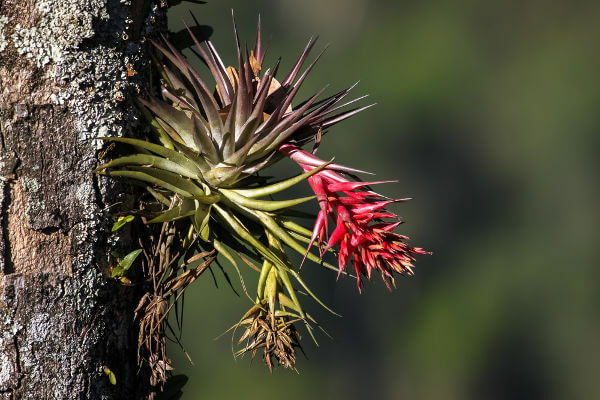THE Atlantic forest it is a biome, composed of different plant formations and associated ecosystems, which stands out for its large biodiversity, including, for example, several endemic species (occurring only in this region). Today, due to a series of factors, which include, for example, human activity, according to the SOS Mata Atlântica Foundation, only 12.4% of the forest that originally existed remains, according to the SOS Mata Atlântica Foundation.
→ Features
The Atlantic Forest is a biome that covered an area of 15% of the Brazilian territory, this area included the states of Alagoas, Bahia, Ceará, Espírito Santo, Goiás, Mato Grosso do Sul, Minas Gerais, Paraíba, Paraná, Pernambuco, Piauí, Rio de Janeiro, Rio Grande do Norte, Rio Grande do Sul, Santa Catarina, São Paulo and Sergipe. Originally, this biome covered an area greater than 1.3 million km2.

The Atlantic Forest is made up of forest formations and some associated ecosystems.
The Atlantic Forest consists of native forest formations
and associated ecosystems. According to the Ministry of the Environment, among the forest formations that are part of the Atlantic Forest, we can mention:Dense Ombrophilous Forest;
Mixed Ombrophilous Forest, also called Araucaria Forest;
Open Ombrophilous Forest;
Seasonal Semideciduous Forest;
Deciduous Seasonal Forest.
The associated ecosystems are:
mangroves;
restinga vegetation;
altitude fields;
inland swamps;
forest enclaves in the Northeast.
Do not stop now... There's more after the advertising ;)
→ how much is left
According to the SOS Mata Atlântica Foundation, currently, remain only 12,4% of the forest that originally existed, and, of these remnants, about 80% are located in private areas. You 12,4% of original forest match to all fragments of native forest over three hectares. Currently, forest remnants are very fragmented.

At present, the Atlantic Forest is very fragmented.
According to the Ministry of the Environment, currently, are found around 29% in original coverage when considering the different regeneration stages of the phytophysiognomies. It is noteworthy that data on vegetation cover may vary according to the author and the methodology chosen for this calculation.
Read too:Current situation of the Atlantic Forest
→ Fauna and Flora
The Atlantic Forest is characterized by its great biodiversity, mainly due to the environmental variations of the biome. These variations happen due to the extension of the Atlantic Forest in latitude, longitude and to variations altitudinal. It is estimated that the Atlantic Forest biodiversity corresponds to 1% to 8% gives world biodiversity.
According to data from the Ministry of the Environment, we find in the Atlantic Forest about:
20 thousand species of vegetables;
850 species of birds;
370 species of amphibians;
200 species of reptiles;
270 species of mammals;
350 species of fish.
One of the best known species of animals in the Atlantic Forest is, without a doubt, the Golden Lion tamarin (Leontopithecus rosalia), species considered today symbol of this biome. This species is endemic and could be found originally throughout the coastal region of Rio de Janeiro and southern Espirito Santo.
In addition to the golden lion tamarin, we can mention, as species of animals from the Atlantic Forest: pingo-de-ouro frog; wild pig; bark monkey; true-painter; macaque; Jaguar; harpy; Toucan; red-tailed parrot; muriqui; and sabia-orange tree.

The golden lion tamarin is a symbol species of the Atlantic Forest.
With regard to plant species, we cannot fail to mention the brazilwood (Caesalpinia echinata), which gave our country its name. In addition to pau-brasil, in the Atlantic Forest we find several species of bromeliads, orchids, ferns, a araucaria it's the heart of palm.
→ Importance
The Atlantic Forest is extremely important both economically, how much ecologically. The forest formations found in the Atlantic Forest help, for example, in climate regulation and soil protection. Let's not forget that seven from nine largest river basins Brazilians are in the Atlantic Forest, and the preserved vegetation protects rivers and springs, thus ensuring the water supply for the population.
In this biome, we also find a wide variety of animal and plant species that have several economical applicationss. Several species are used in food, for obtaining wood and as a raw material for the manufacture of medicines and cosmetics. Unfortunately, the uncontrolled use of the Atlantic Forest biodiversity has caused great undoing of this important biome.
Read too:Atlantic Forest and the Jureia Ecological Station - Itatins
→ Degradation
Between the harmful anthropic actions carried out against this biome, we can highlight: o logging in order to create favorable areas for the Agriculture and Livestock; The exaggerated exploration the resources of that location; and the urban expansion. With regard to resource exploitation, many areas of the Atlantic Forest, for example, were and are currently destroyed for the purpose of logging.
In addition to deforestation, biodiversity is also threatened in other ways, such as through the hunting of animals, of predatory fishing It's from illegal traffic of plants and animals native to the region. We cannot fail to mention the disorderly tourism that ends up harming these biomes by causing damage to the environment, for example, polluting the place.
Read too: How to recover the Atlantic Forest
→ Curiosities

The Atlantic Forest has about 20 thousand plant species, including bromeliads and orchids.
The Atlantic Forest is protected by law. THE Law No. 11.428/2006 provides for the use and protection of native vegetation in the Atlantic Forest biome, and other measures.
The Atlantic Forest was the first biome to be explored during colonization.
May 27 is celebrated as the National Day of the Atlantic Forest.
In the Atlantic Forest there are about 20 thousand plant species, which corresponds to approximately 35% of the Brazilian species.
The Atlantic Forest is a hot spot, that is, an area of the planet rich in biodiversity, but highly threatened.
In the Atlantic Forest, according to IBGE data, almost 72% of the Brazilian population lives.
By Ma. Vanessa Sardinha dos Santos

